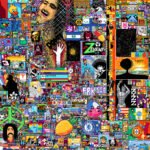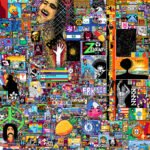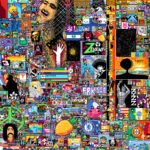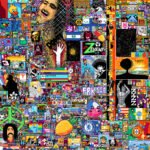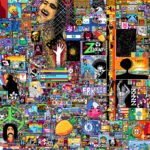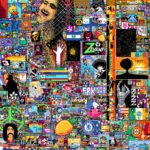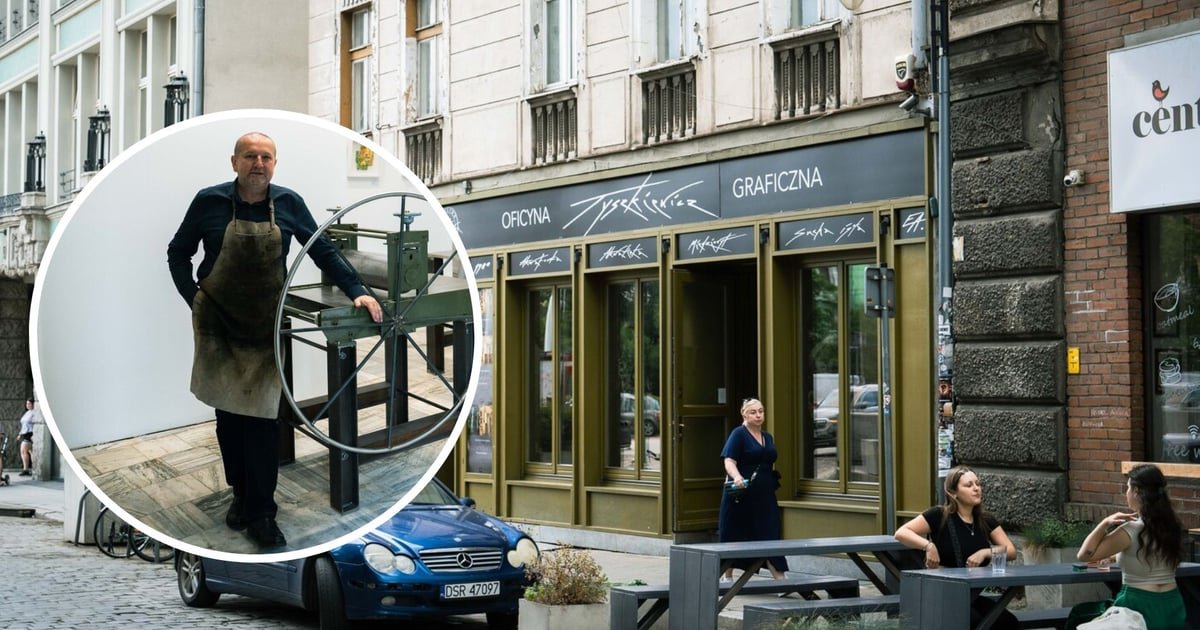
Graphic art in the very centre of Wroclaw and attention
Professor Przemysław Tyszkiewicz is known to everyone who appreciates fine graphic art. The artist lectures at the Wroclaw Academy of Fine Arts and at SWPS University and is the originator of the Wroclaw School of Graphic Art. As he emphasises, he has devoted his whole life to his beloved field and knows absolutely everything about it.
Now he wants to share his knowledge, skills and taste with others and to make graphic art more recognisable.
‘I am an orthodox Wroclaw patriot. This is where I was born and where I have spent most of my life living and working, and now my mission is to promote Wroclaw by means of the unique graphic art that brings us worldwide recognition,’ convinces Professor Tyszkiewicz.
For this purpose, the artist and his wife Magdalena have just opened Tyszkiewicz Graphic Art House – a place for art in the very centre of the city at 8 Antoniego Street, exactly opposite the New Horizons Cinema.
It is intended to serve not only as an exhibition space but also as a studio. ‘Tyszkiewicz Graphic Art House is dedicated to graphic art – we want to show works of both young and renowned artists. I would also like this place to be associated with a studio where people can come and watch the artist during his work as well as participate in classes and see how graphic works are created,’ says Professor Tyszkiewicz.
Who needs graphic art in the 21st century?
‘Well, why do mountaineers climb eight-thousanders?’ replies Professor Tyszkiewicz. ‘It is a challenge and mission to maintain the old techniques and to pass them to further generations in order to equal the old masters with works on an adequate level,’ stresses the Wroclaw artist.
And he immediately points out that, although the art of printing develops at lightning speed and artificial intelligence aggressively enters this area, too, graphic art with its rules that have not significantly changed since the 16th century still remains fascinating and unique for recipients.
‘Nothing has substantially changed in technology,’ explains Professor Tyszkiewicz, showing the most valuable equipment in Tyszkiewicz Graphic Art House – the graphic press he bought from a private graphic artist in Munich.
‘This press is a Mercedes in its category – precise and heavy as a German tank, the pressure of 200 kg per square centimetre, although it was built in home conditions by a German engineer willing to express love for his wife,’ tells the Wroclaw artist.
He adapted the bought thing to his own needs – massive legs were designed by a Brazilian Vinicius Libardoni, who was his doctoral student. Przemysław Tyszkiewicz designed a pressing wheel for the press. ‘Previously it was a small handle, but the wheel is more comfortable, and my spine also deserves rest,’ he adds.
The graphic press is used for making prints. One print requires 40 minutes of hard work, where not only physical strength, skills and precision of equipment but also the quality of paper counts.
Prints are made with the use of paper from cotton rags. The professor uses paper from a number of producers, including Italy’s Fabriano (existing since 1264), Germany’s Zerkali or Hahnemühle (established in 1584). The last company was known both for fine quality and its infamous activity during World War II.
‘The company sponsored the counterfeiting of securities and pounds in the Sachsenhausen camp. The Nazis wanted to flood England with counterfeit money, but they did not do this for unknown reasons, although they had gathered a team of counterfeiters, and this even became the theme of the Oscar-winning film The Counterfeiters in 2007,’ explains Tyszkiewicz.
Wroclaw – graphic art with a tradition
Professor Tyszkiewicz stresses that works by Wroclaw graphic artists are greatly appreciated and recognised worldwide, including Australia, China, Korea, India, South America or even Iran. ‘Everywhere we are received with open arms and a slight bend of knees. The Wroclaw School of Graphic Art is appreciated,’ remarks Tyszkiewicz.
This is also due to the tradition and drawing upon the best examples. The collection of the Ossoliński National Institute contains invaluable prints by Rembrandt and the only work of the outstanding German printmaker Albrecht Dürer in Polish collections.
In this context, it is also worth mentioning Eugeniusz Get-Stankiewicz – a guru of artists and the circle of printmakers, who worked in the Engraver’s House after the war.
‘My Tyszkiewicz Graphic Art House is a sort of continuation of what Get-Stankiewicz started. His path also led from the Academy of Fine Arts to Wroclaw and the Engraver’s House,’ recalls the artist.
Professor Tyszkiewicz believes that every attempt to show graphic art on the streets, outside the university walls, is very important. The first open-air initiative of Tyszkiewicz Graphic Art House has already been a success.
During the May edition of Gastro City, the professor gave his students an opportunity to present their works in two tents. The fair aroused great interest.
‘There is a widespread belief that artists keep their works in the sock drawer and are not interested in selling them. And, after all, it is a profession like any other. I am proud that I can make a living from my work, and I support students and encourage them to take part in fairs,’ explains Professor Tyszkiewicz.
For the time being, he does not intend to sell graphic works in Tyszkiewicz Graphic Art House. We operate on a non-profit basis, although we may change it in some time. Now I would like to focus on running this place, advertising, doing workshops and obtaining grants. We have plans on a very large scale,’ announces the Wroclaw artist.
Tyszkiewicz Graphic Art House – what will we see inside?
For the time being, a joint exhibition by Professor Tyszkiewicz and his long-year friend Juan Candon – a Spanish graphic artist from Cadiz.
‘Juan is a traditionalist, but this time I am showing his completely different works. Every graphic artists makes a lot of proof prints, and he also had a whole heap of them. At the time of moving, he wondered whether to burn them or throw them away. He decided to take the sheets with him and started making spatial compositions out of them in the new place,’ tells Professor Tyszkiewicz.
One of the works of the Wroclaw artist that we will see at the exhibition is the plan of Wroclaw that Tyszkiewicz once prepared at the request of the Mayor of Wroclaw Bogdan Zdrojewski. ‘This work got into respectable hands: from presidents Jacques Chirac, Vaclav Havel and Aleksander Kwaśniewski to Jan Nowak-Jeziorański,’ says the professor with visible pride.
The Graphic Art House at 8 Antoniego Street will soon show eight further exhibitions – first by two graduates of the Academy of Fine Arts Modesta Gorol and Bartłomiej Podgórniak and then by well-known artists: illustrator Jacek Szewczyk and Chris Nowicki – an American specialising in the difficult mezzotinta technique, who arrived in Poland with a briefcase under his arm in the 1990s, received a small graphic press from Get-Stankiewicz and that was where it started. Exhibitions by artists from China and Japan are also planned.
‘I have a free hand in choosing artists and a nice idea what interesting examples of graphic art to show. And how to make people familiar with it,’ assures Professor Tyszkiewicz.
He stresses that the door to Tyszkiewicz Graphic Art House at 8 Św. Antoniego Street is open. So, feel free to come over.
Link to the text: https://www.wroclaw.pl/kultura/oficyna-graficzna-tyszkiewicz-nowe-miejsce-dla-sztuki-na-antoniego-wroclaw

